Recent Articles
Popular Makes
Body Types
2020 Kia Soul Road Test and Review
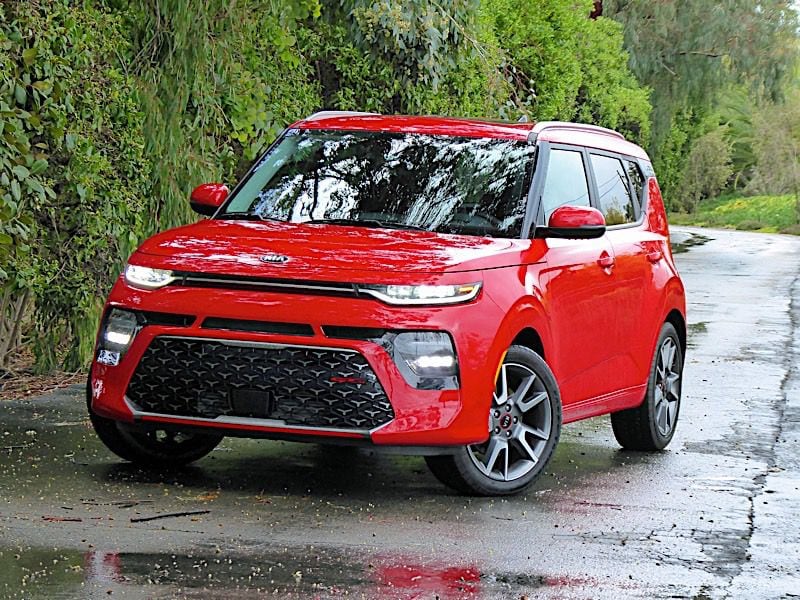
2020 Kia Soul hero ・ Photo by Ron Sessions
The once geeky-eyed but winsome Soul is growing up. Now in its third generation, the 2020 Kia Soul gets a cool center visor across its nose, flanked by two strips of Hershey-bar-sized headlamps. The new GT-Line Turbo shown here has a large, aggressive-looking, slightly frowning lower grille and outboard LED fog lamps and daytime running lamps. The new Soul looks like it just got its street smarts.
Built in an all-new platform with stiffer structure, the 2020 Soul is 2.2 inches longer than last year's model and shares its 1.2-inch longer wheelbase with the Hyundai Kona. Although the new Soul is still boxy in back to maximize cargo space, the rearmost roof pillars are less blocky than before with an airplane vertical stabilizer-like design separating them from the roof. Two-tone paint jobs remain available. The 2020 Soul’s vertical boomerang taillamps are now more expressive, curving and extending from the roof pillars to the liftgate. On the top GT-Line turbo model, a pair of center exhaust outlets punctuate the rear fascia in sporty fashion. Upsized 18-inch wheels are available in the 2020 Soul EX, X-Line, and GT-Line trims.
A Soulful Look
All 2020 Soul models, including the new X-Line version shown here, also get the street-smart look, but with still-slender-but-conventional headlamps, larger daytime running lamps, and — on X-Line and above models — a pair of fog lamps dotting the grille. The X-Line also adds rugged-looking body cladding and wheel flares for a more robust off-pavement vibe. Sizewise, the 2020 Soul offers generous interior space for its class. The new Soul is almost a foot and a half shorter than Kia’s compact Forte sedan and about 4 inches more abbreviated than the Nissan Kicks. This makes the Kia Soul a great urban runabout, with the kind of maneuverability and parking ease larger vehicles can’t match.
Like what you see? Kia’s rejiggered Soul lineup now starts with the $18,485 LX (including a $995 destination charge) and running up through the S, EX, X-Line, and GT-Line trims. The top GT-Line Turbo stickers at $28,485, which is Volkswagen Golf GTI price territory. Your soul-searching starts now.
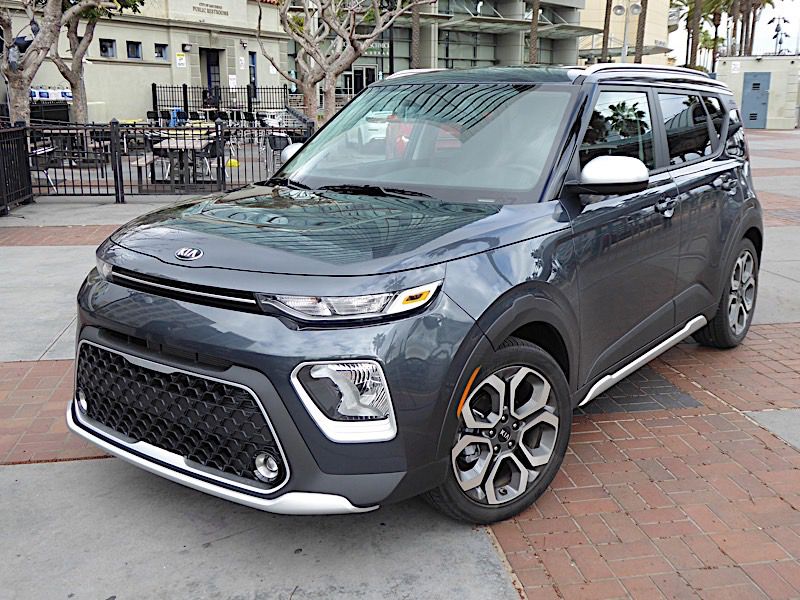
Photo by Ron Sessions
What Moves the Soul
For 2020, all Soul models except one version of the new GT-Line get a new port-injected 2.0-liter four-cylinder engine featuring 147 horsepower and 132 lb-ft, which is shared with the Kia Forte and Hyundai Kona. It’s way perkier than last year’s 130-hp, 118-lb-ft base 1.6-liter engine but doesn’t quite have the punch of the 2019 model’s mid-level engine choice: a 2.0-liter with 161 hp and 150 lb-ft of torque.
A six-speed manual transmission is available on the base LX, but most buyers will opt for the new continuously variable automatic that's available in all Soul trims. The CVT seamlessly picks the right gear ratio from a wide band to optimize engine response and fuel efficiency. Steps are built into the CVT’s programming to simulate the gear changes most buyers are accustomed to, and it avoids long periods of wide-open throttle such as when passing or merging on freeways. A stop-start system shuts off the engine at idle. EPA estimates are 25 mpg in the city, 31 mpg on the highway, and 27 mpg combined with the six-speed manual and 27 mpg city/33 mpg highway/30 mpg combined with the CVT.
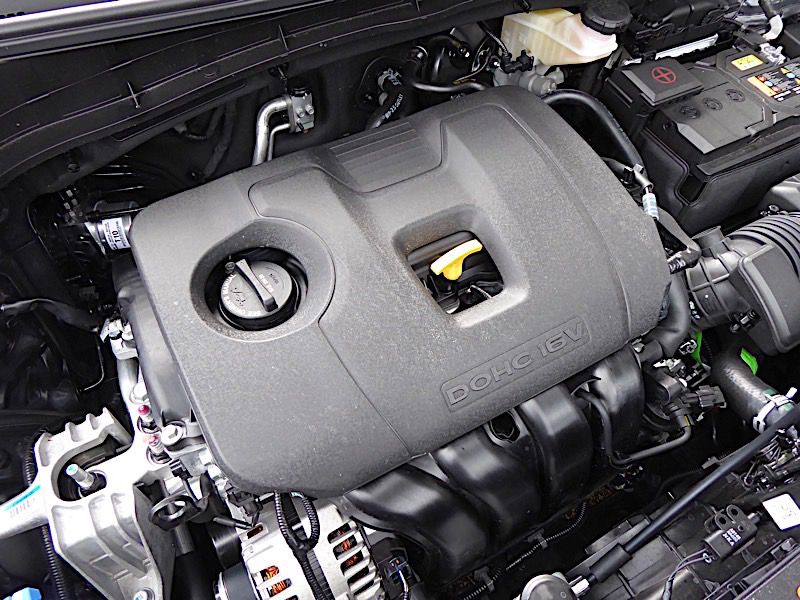
Photo by Ron Sessions
GT-Line Turbo Power
The Soul’s snappy, direct-injected 201-hp 1.6-liter turbo four-cylinder returns for 2020 in the all-new GT-Line. It’s the sole Soul model to offer the turbo engine. First appearing in the 2017 Soul ! (Exclaim) model, the 1.6-liter turbo also powers versions of the Hyundai Veloster, Hyundai Elantra, and Kia Forte. With a robust 195 lb-ft of torque on tap beginning at just 1500 rpm and staying strong in the engine’s midrange, the 1.6 turbo raises the fun-to-drive quotient and provides good throttle response with no lag regardless of engine or road speed.
This engine is hooked to a seven-speed automated dual-clutch transmission that delivers a sporty manual transmission feel without the need to operate a clutch foot pedal, although it can sometimes jerk slightly when starting out, especially if stopped on an uphill grade. EPA estimates for the 1.6 turbo are 27 mpg city/32 mpg highway/29 mpg combined, and it uses affordable regular-grade fuel. Adding to the GT-Line Turbo’s driving capabilities is standard sport-tuned suspension and larger disc brakes.

Photo by Ron Sessions
Made in the Shade
For the 2020 version, Kia kept the Soul’s interior space about the same as previous years, which is to say remarkably good for a car this small and maneuverable. Less intrusive front door trim this year makes for a wider opening, easing ingress and egress. Seat height, slightly raised over that of a sedan’s but not as tall as many SUV’s, is just right, affording an upright cabin and good outward visibility to keep tabs on other souls.
For an entry vehicle to the brand, the Soul’s interior is a surprisingly pleasant place to spend time. The seats are comfortable, whether in base cloth or uplevel cloth and contrasting-stitch faux-leather trim. A tilt/telescopic steering column is standard, as are power door locks, windows, and mirrors. Cruise control and keyless entry arrive in the S trim, a leather-wrapped steering wheel and shifter with X-Line, dual-zone automatic climate control, a smart key with push-button start, and heated front seats with the EX, and a sunroof and power driver’s seat in the GT Turbo.
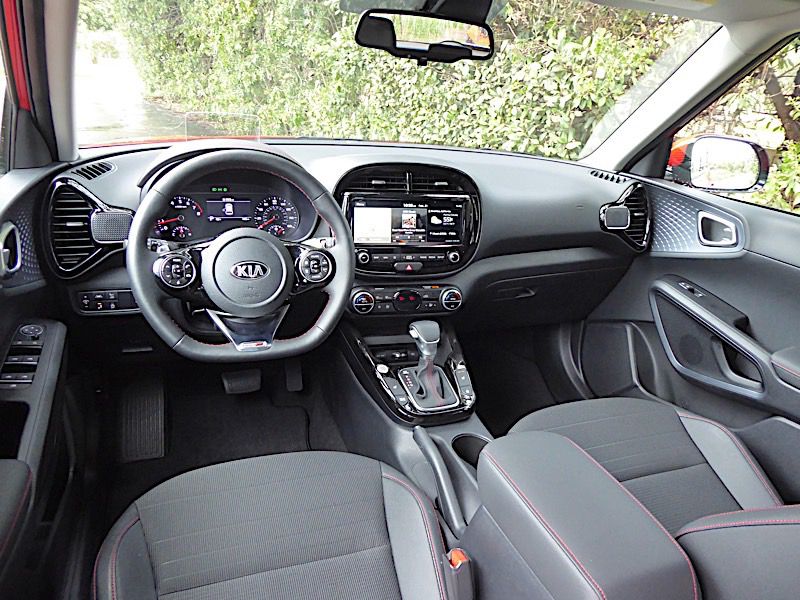
Photo by Ron Sessions
Standard Screen
The Soul's LX, S, and X-Line models come equipped with this 7-inch touchscreen display AM/FM/MP3 audio system. It has six speakers, standard Bluetooth phone connectivity and audio streaming, one each USB and auxiliary input jacks, and a pair of 12-volt console power outlets. Apple CarPlay and Android Auto smartphone integration are standard as well.
For 2020, the Soul’s signature dashtop tweeters have been moved to face level on the dash, offering even greater sound clarity.
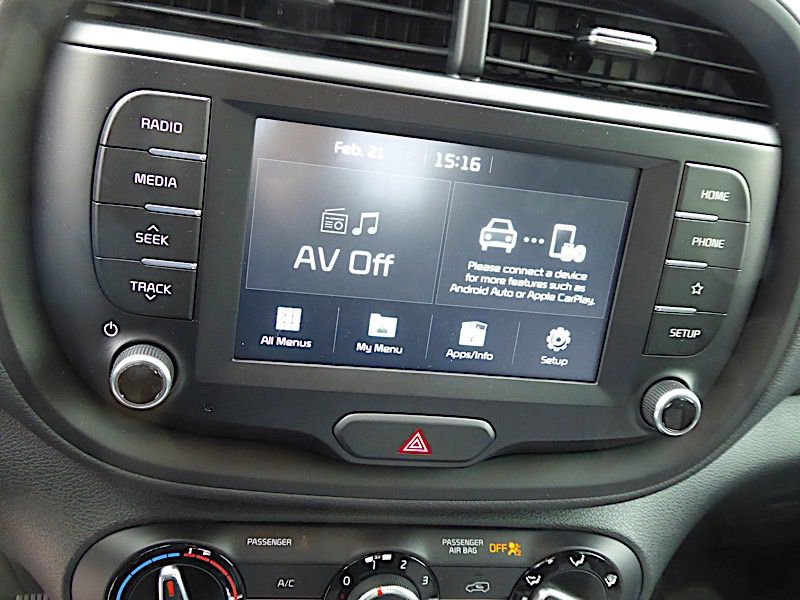
Photo by Ron Sessions
The Big Screen
Moving up to the EX or GT-Line Turbo brings the big screen to the Soul: a horizontal-format 10.25-inch touchscreen with split-screen functionality, SiriusXM, HD radio, navigation, and voice commands. The USB count increases to two in the console, plus a wireless charging pad.
The GT-Line Turbo trim also adds a hamster-pleasing 640-watt 10-speaker Harman Kardon premium audio system and speaker lighting. Ambient mood lighting remains part of the Soul’s evening attire with six different themes/colors to choose from. It bathes the center console and upper front corners of the front door panels and can pulsate to the beat of the music.
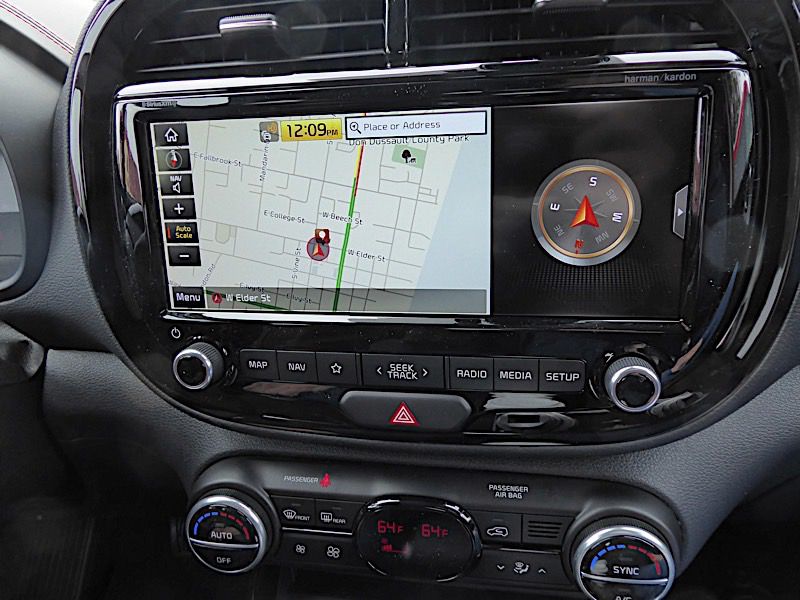
Photo by Ron Sessions
Room for More Than Hamsters
The Soul’s back seat is surprisingly roomy despite the car’s diminutive size. Two adults (three in a pinch) fit back there without complaint, owing to the upright seating angle and relatively tall roof.
The back seat folds flat, is split 60/40 to allow one or two passengers to sit back there with the other section folded to accommodate longer cargo, and has a folding center armrest with cupholders.
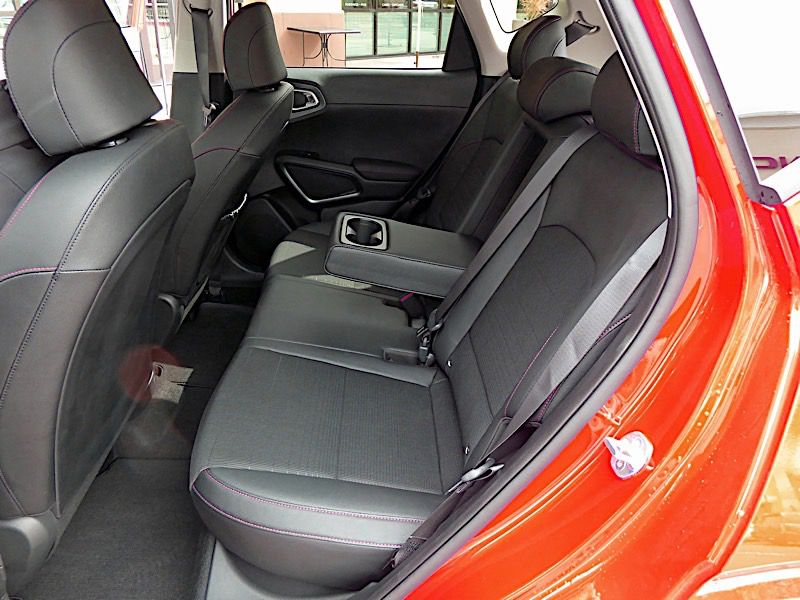
Photo by Ron Sessions
The Backpack
That’s what Kia calls the cargo area of the Soul. And it’s just that: a square box for holding lots of square boxes and other stuff. For 2020, the liftback opening is larger and lower to the ground for easier loading. EX and GT-Line Turbo models get a standard cargo security cover and adjustable-level cargo floor “board” for accommodating items of different heights.
Right behind the raised rear seat, there’s 24.2 cubic feet of space — more than the trunk of a full-size sedan. Drop the rear seat and fill in the nooks and crannies on the rear seat floor, and total space opens up to a yawning 62.1 cubic feet, which is more than the published numbers for the Hyundai Kona, Honda HR-V, or Nissan Kicks.
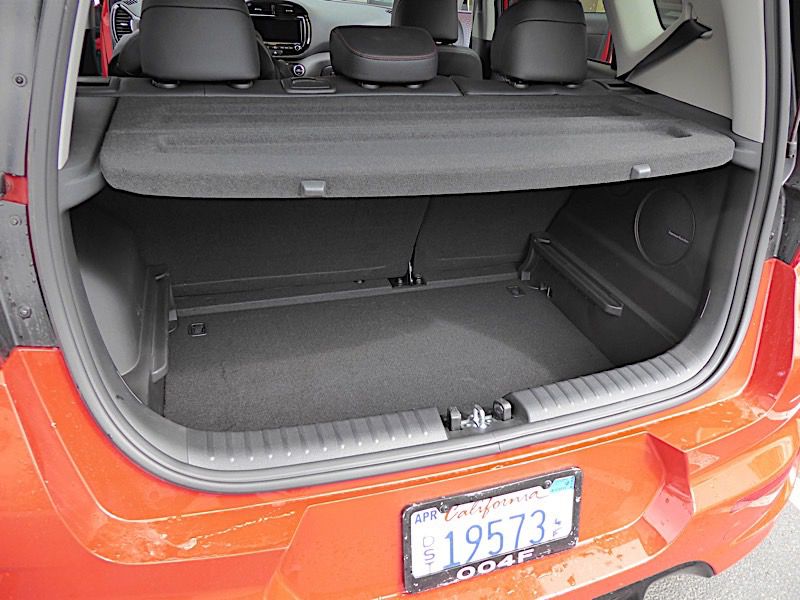
Photo by Ron Sessions
DriveWise Safety
As with other automakers in their smaller offerings, Kia is loading a lot of advanced safety technology into the 2020 Soul.
Standard features on most trims above the base LX model include lane-keep assist, lane-change assist, a driver attention warning, blind-spot and rear cross-traffic alerts, and automatic emergency braking. The GT-Line turbo trim gains smart cruise control and an 8-inch head-up display as well.
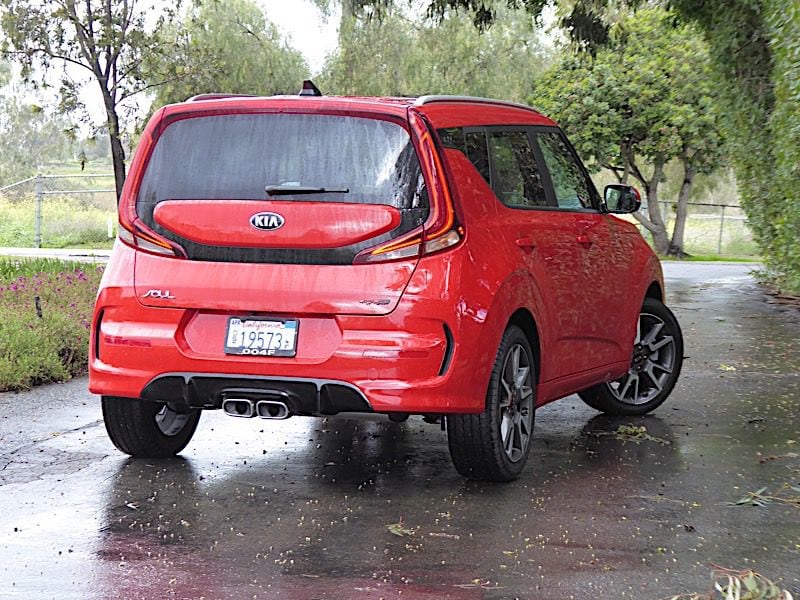
Photo by Ron Sessions
Soul Searching
Small, uncomplicated, and efficient — who wouldn’t want a relationship characterized like that? You can’t call the 2020 Kia Soul an SUV without more sunlight peeking underneath and all four wheels putting down the power (every Soul comes only with front-wheel drive). And it’s certainly not a regulation-issue four-door sedan. The Soul is pretty much one of a kind: a wagon/hatchback mix with street smarts and good utility that’s been one of Kia’s best sellers, especially with first- and second-time buyers. The tougher-looking, RayBan-kool 2020 Kia Soul can only increase the intensity of that interest.
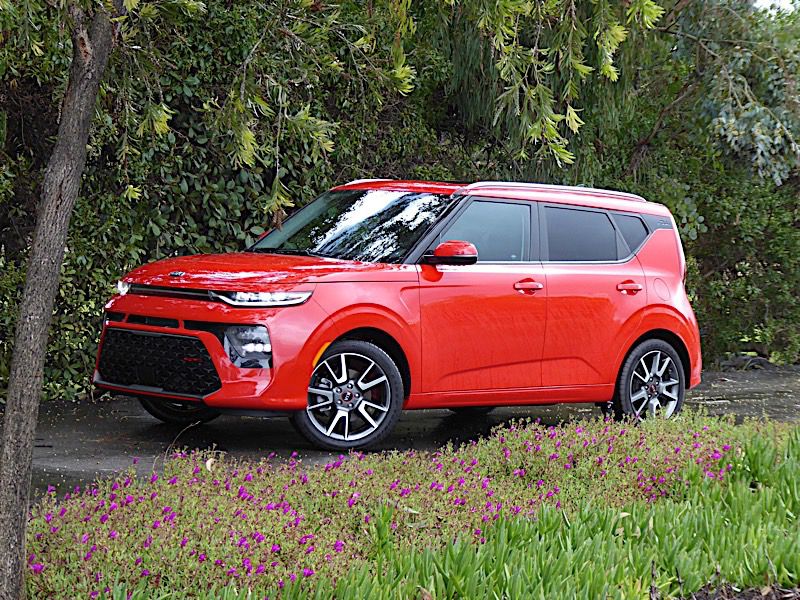
Photo by Ron Sessions